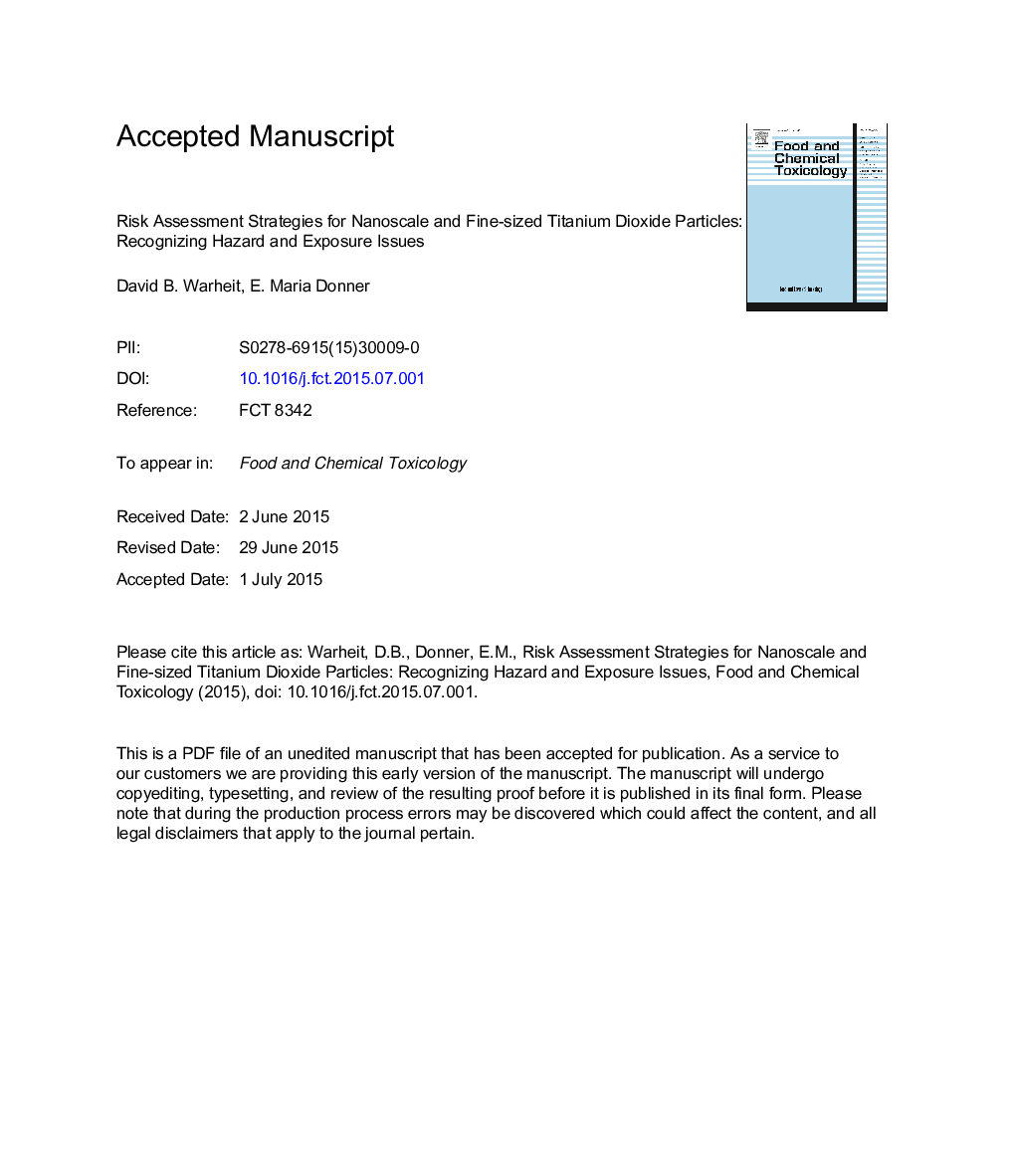| کد مقاله | کد نشریه | سال انتشار | مقاله انگلیسی | نسخه تمام متن |
|---|---|---|---|---|
| 5849467 | 1561759 | 2015 | 53 صفحه PDF | دانلود رایگان |
عنوان انگلیسی مقاله ISI
Risk assessment strategies for nanoscale and fine-sized titanium dioxide particles: Recognizing hazard and exposure issues
ترجمه فارسی عنوان
استراتژی های ارزیابی خطر برای ذرات دی اکسید تیتانیوم نانومقیاس و ضخیم: شناخت موارد خطر و قرار گرفتن در معرض
دانلود مقاله + سفارش ترجمه
دانلود مقاله ISI انگلیسی
رایگان برای ایرانیان
کلمات کلیدی
دی اکسید تیتانیوم، نانومواد، مسیرهای قرار گرفتن در معرض، ارزیابی ریسک، سمیت دهان، سمیت ریوی، سمیت پوست، چارچوب خطر نانو،
موضوعات مرتبط
علوم زیستی و بیوفناوری
علوم کشاورزی و بیولوژیک
دانش تغذیه
چکیده انگلیسی
The basic tenets for assessing health risks posed by nanoparticles (NP) requires documentation of hazards and the corresponding exposures that may occur. Accordingly, this review describes the range and types of potential human exposures that may result from interactions with titanium dioxide (TiO2) particles or NP - either in the occupational/workplace environment, or in consumer products, including food materials and cosmetics. Each of those applications has a predominant route of exposure. Very little is known about the human impact potential from environmental exposures to NP - thus this particular issue will not be discussed further. In the workplace or occupational setting inhalation exposure predominates. Experimental toxicity studies demonstrate low hazards in particle-exposed rats. Only at chronic overload exposures do rats develop forms of lung pathology. These findings are not supported by multiple epidemiology studies in heavily-exposed TiO2 workers which demonstrate a lack of correlation between chronic particle exposures and adverse health outcomes including lung cancer and noncancerous chronic respiratory effects. Cosmetics and sunscreens represent the major application of dermal exposures to TiO2 particles. Experimental dermal studies indicate a lack of penetration of particles beyond the epidermis with no consequent health risks. Oral exposures to ingested TiO2 particles in food occur via passage through the gastrointestinal tract (GIT), with studies indicating negligible uptake of particles into the bloodstream of humans or rats with subsequent excretion through the feces. In addition, standardized guideline-mandated subchronic oral toxicity studies in rats demonstrate very low toxicity effects with NOAELs of >1000Â mg/kg bw/day. Additional issues which are summarized in detail in this review are: 1) Methodologies for implementing the Nano Risk Framework - a process for ensuring the responsible development of products containing nanoscale materials; and 2) Safe-handling of nanomaterials in the laboratory.
ناشر
Database: Elsevier - ScienceDirect (ساینس دایرکت)
Journal: Food and Chemical Toxicology - Volume 85, November 2015, Pages 138-147
Journal: Food and Chemical Toxicology - Volume 85, November 2015, Pages 138-147
نویسندگان
David B. Warheit, E. Maria Donner,
